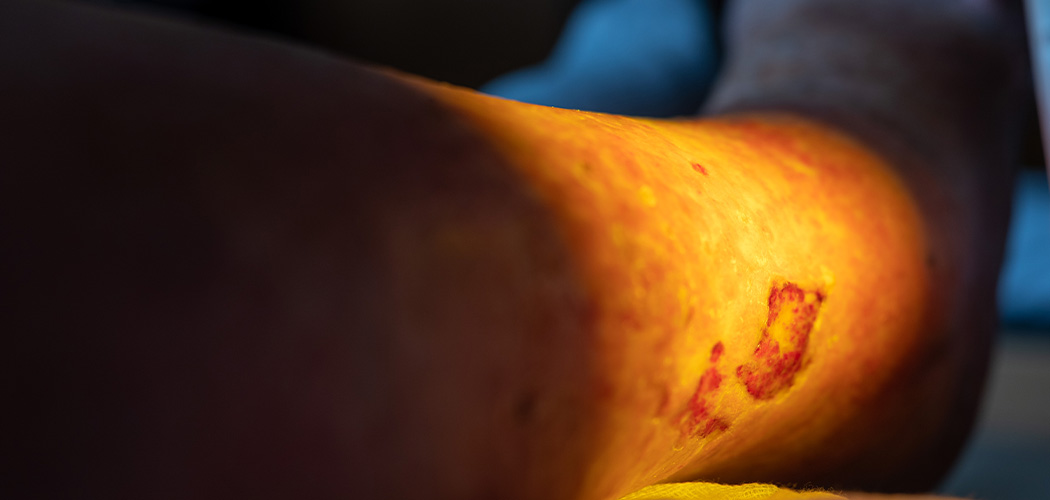A team of international scientists has developed a more effective treatment for chronic wounds that doesn’t involve antibiotics or silver-based dressings, but instead, an ionized gas called plasma.
The treatment involves boosting the plasma activation of hydrogel dressings with a unique mix of different chemical oxidants that decontaminate and help health chronic wounds.
According to University of South Australia physicist Dr Endre Szili, who led the study, published this week in Advanced Functional Materials, the new method delivers a “significant breakthrough” that could revolutionise the treatment of diabetic foot ulcers, internal wounds, and potentially cancerous tumours.
Researchers say the benefits of cold plasma ionised gas have already been proven in clinical trials, showing it controls not only infection but also stimulates healing. This is due to the potent chemical cocktail of oxidants, namely reactive oxygen and nitrogen species (RONS) it produces when it mixes and activates the oxygen and nitrogen molecules in the ambient air.
Dr Szili and his colleagues have demonstrated that plasma activating hydrogel dressings with RONS makes the gel far more powerful, killing common bacteria. Although diabetic foot ulcers were the focus of the study, the technology could be applied to all chronic wounds and internal infections, researcher say.
“Despite recent encouraging results in the use of plasma activated hydrogel therapy (PAHT), we faced the challenge of loading hydrogels with sufficient concentrations of RONS required for clinical use,” Dr Szili says.
“We have overcome this hurdle by employing a new electrochemical method that enhances the hydrogel activation.”
As well as killing common bacteria (E. coli and P. aeruginosa) that cause wounds to become infected, the researchers say that the plasma activated hydrogels might also help trigger the body’s immune system, which can help fight infections.
“Chronic wound infections are a silent pandemic threatening to become a global healthcare crisis,” Dr Szili says.
“It is imperative that we find alternative treatments to antibiotics and silver dressings because when these treatments don’t work, amputations often occur.”
Dr Szili believes that, in future, plasma could be used to treat cancerous tumours by activating drugs contained within gels injected into the body.
“The active ingredients could be delivered over a lengthy period, improving treatment, with a better chance of penetrating a tumour.
“Plasma has massive potential in the medical world, and this is just the tip of the iceberg,” Dr Szili says.
The next step will involve clinical trials to optimise the electrochemical technology for treatment in human patients.









One Response
Very interesting indeed!
I am a Wound care Practitioner in South Africa, dealing with a number of diabetic foot ulcers and other wounds. Would like to know more about this.